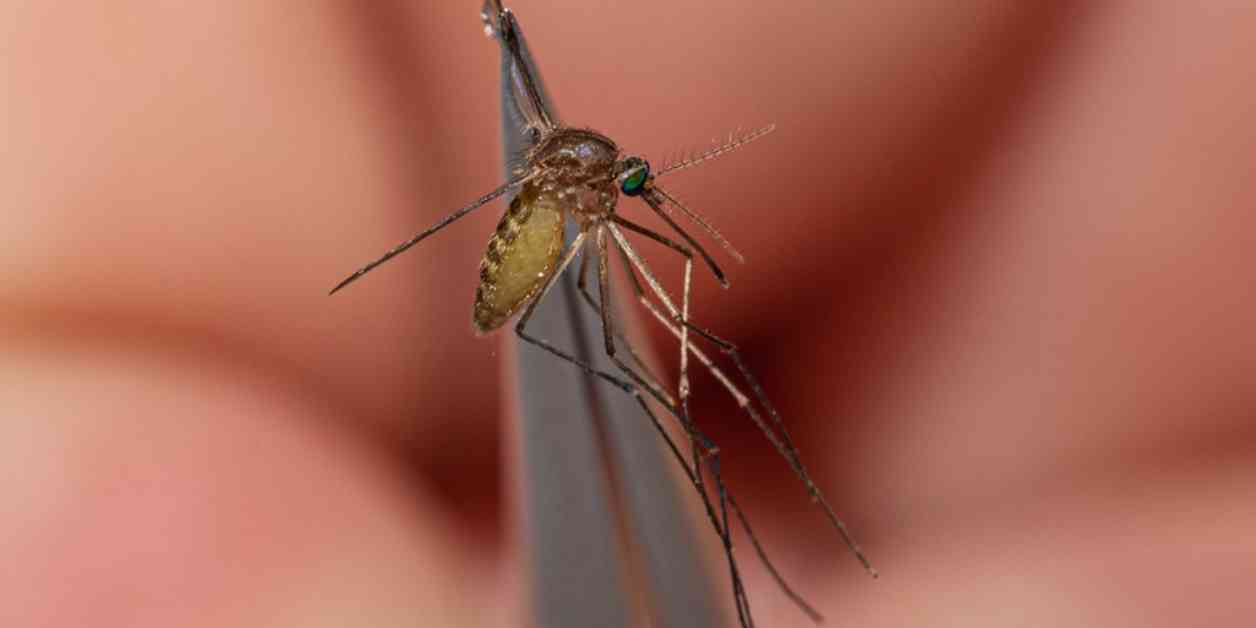Amidst concerns over a recent case of Eastern Equine Encephalitis (EEE) in Massachusetts, state health officials are taking proactive measures to protect residents from this rare but deadly disease, which is spread by mosquitoes. The discovery of the first human case of EEE in the state since 2020 has prompted several towns to implement precautionary measures, including the closure of public outdoor recreation facilities in Plymouth and advisories urging residents in other high-risk areas to limit outdoor activities during peak mosquito biting times.
Deadly Eastern Equine Encephalitis Case Uncovered
The recent case of EEE involves a man in his 80s who contracted the disease, marking the first human infection in Massachusetts in over a year. This alarming development has prompted state health officials to issue warnings and advisories to communities at high risk of EEE transmission. The town of Plymouth, located southeast of Boston, has taken the proactive step of closing public outdoor recreation facilities from dusk until dawn each day in response to the discovery of an infected horse in the area.
Furthermore, a cluster of four towns south of Worcester—Douglas, Oxford, Sutton, and Webster—have been identified as being at “critical risk” following a confirmed case of EEE in a man from Oxford. Residents in these towns are being urged to avoid outdoor activities during peak mosquito biting times and to use mosquito repellents as a preventive measure. State and local health officials have emphasized the importance of taking precautions to reduce the risk of EEE transmission, especially as mosquito activity tends to peak during the late summer and early fall months.
Preventative Measures and Public Health Advisory
In light of the recent EEE case, public health officials across Massachusetts are urging residents to take proactive measures to protect themselves from mosquito bites and reduce the risk of EEE transmission. Recommendations include using mosquito repellents when outdoors, draining standing water around homes to eliminate mosquito breeding sites, and avoiding outdoor activities during peak mosquito biting times. Additionally, residents in high-risk areas are advised to finish outdoor activities by 6 p.m. until September 30, and by 5 p.m. thereafter, until the first hard frost.
Jennifer Callahan, the town manager of Oxford, emphasized the seriousness of EEE and the importance of following public health advice to prevent further cases. She shared a message from the family of the infected individual, highlighting the severe physical and emotional consequences of the disease and urging the community to take necessary precautions. The infected individual, who remains hospitalized, serves as a stark reminder of the potential dangers posed by EEE and the importance of vigilance in preventing mosquito-borne illnesses.
Impact of Eastern Equine Encephalitis
The presence of EEE in Massachusetts this year has raised concerns about the potential impact of the disease on public health. With confirmed cases of EEE in both humans and mosquitoes, health officials are closely monitoring the situation to prevent further spread of the virus. In a previous outbreak in 2019, Massachusetts saw six deaths among 12 confirmed cases of EEE, underscoring the severity and potential lethality of the disease.
Despite efforts to control mosquito populations and reduce the risk of EEE transmission, there are currently no vaccines or specific treatments available for the disease. According to the Centers for Disease Control and Prevention (CDC), EEE is a serious illness with a mortality rate of around 30%, making it a significant public health concern. Symptoms of EEE can range from fever and headache to more severe complications such as seizures, vomiting, and diarrhea, highlighting the need for early detection and prompt medical intervention.
Prevention and Awareness Campaigns
As public health officials work to contain the spread of EEE in Massachusetts, efforts are underway to raise awareness about the disease and educate the public on preventive measures. Community outreach programs, public health campaigns, and informational resources are being utilized to inform residents about the risks associated with EEE and the importance of taking precautions to prevent mosquito bites.
One of the key messages being emphasized is the need for vigilance and proactive measures to reduce exposure to mosquitoes and minimize the risk of EEE transmission. By implementing simple steps such as using insect repellents, wearing protective clothing, and avoiding outdoor activities during peak mosquito activity, individuals can significantly reduce their risk of contracting EEE. Additionally, efforts to eliminate mosquito breeding sites and reduce mosquito populations are being undertaken to further mitigate the spread of the virus.
Conclusion
In conclusion, the recent discovery of a human case of Eastern Equine Encephalitis in Massachusetts serves as a stark reminder of the potential dangers posed by mosquito-borne illnesses. With the risk of EEE transmission heightened during the late summer and early fall months, residents are urged to take proactive measures to protect themselves and their communities from the disease. By following public health advisories, using mosquito repellents, and avoiding outdoor activities during peak mosquito biting times, individuals can reduce their risk of EEE infection and help prevent further cases of the disease. As state and local health officials continue to monitor the situation and implement preventive measures, it is essential for residents to remain vigilant and prioritize their health and safety in the face of this ongoing public health threat.

















